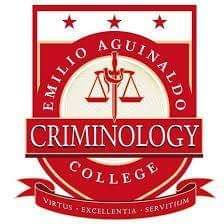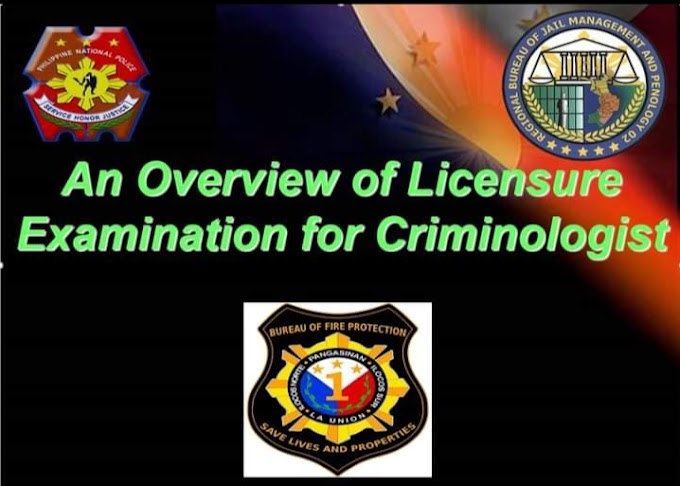An Interdisciplinary Academic Model:
We need to continue to adopt an interdisciplinary perspective within academic criminology and criminal justice. The hard sciences and medicine were two of the great historical successes of the 20th century. A conspicuous absence from this great leap, however, was the development of the social sciences and the behavioral sciences. In a recent press article, Allan Bloom (author of The Closing of the American Mind, - The Closing of the American Mind - 1987) criticized the social sciences and the behavioral sciences for being academically stagnant. Bloom argues that there have been no new perspectives, no new paradigm, no theory of value or impact that has been offered in recent decades. Compared to the hard sciences and medicine, the traditional disciplines of sociology, psychology, anthropology, economics, history, political science are comatose, if not dead altogether. The primary reason he posits is intellectual incest. There is, indisputably, a certain point in Bloom's argument. Those who have a doctorate in social sciences give the jobs to their own.
Sociologists teach sociologists, psychologists teach psychologists, political scientists train political scientists, and the result is inevitably some measure of academic atrophy in these fields. In an essay appearing in the January/February 1997 issue of ACJS Today, Robert Engvall echoed some of these latter ideas, noting how professors tend to hire younger versions of themselves, which invariably leads to an academic environment. provincial and closed character
While there are some social science research institutes, there is nothing in the social and behavioral sciences that even comes close to equaling NASA, the Center for Disease Control in Atlanta, or the Mayo Clinic. Multidisciplinary consultations are the norm of everyday life in science and medicine. Old barriers in the hard sciences are being broken down daily, with amazing results. The social and behavioral sciences simply have not yet begun to approach the pace of development and progress in the hard sciences. However, there has been some meritorious contribution from the soft sciences during the last century. The social sciences are not as akin to cold, dead stones as Bloom presumes, but his basic causal premise is right. There is a significant lack of cross-pollination and plural fertilization in the academic world of the behavioral and social sciences, and this is inhibiting the growth and development of these fields of study. I would like to suggest that much of the reason for the somewhat rapid rise of criminal justice and criminology as a field of study in the United States has been its interdisciplinary diversity. A fringe field of study in the 1960s and 1970s, criminal justice exploded onto the academic scene in the 1990s, in part due to the emergence of crime as a major subject in the minds of the body politic, but also largely due to its academic diversity and its multidisciplinary nature. Currently, in the United States there are more than 1,000 academic programs that offer bachelor's degrees and approximately 250 that offer graduate courses. It is not unusual to find faculty in these programs with degrees in history, psychology, sociology, public administration, law, political science, urban studies, as well as criminology and criminal justice.
It is necessary to continue clinging to the multidisciplinary model that has provided the precise fuel for this contemporary surge in criminal justice in the academic world[2]. Such a proposal has two advantages:
1.
Students will have an improvement in their educational experience thanks to this academic exchange. They will interact with teachers and students from other disciplines and see things from a broader perspective. The very nature of education suggests the need to break free from previous molds, to examine and explore new perspectives and new horizons. A very narrow academic degree focused on the social sciences does not make sense. My experience is that top criminal justice students frequently indicate a desire to take courses outside of criminal justice, not because of problems with the program itself, but because of a desire to enhance the breadth of their educational experience.
2.
This will serve to increase the content and scope of the interaction between teachers coming from different fields of study, resulting in an increase in productivity due to this fertilizing interaction. It will also strengthen ties between academic departments at universities. There is, in fact, a need to break down the walls of disciplinary sterility that infect many academic institutions, and my proposal would put this goal within our reach. A side effect will be multi-departmental funding requests, and a general atmosphere of collaboration in research and publication. As previously mentioned, the hard sciences have already moved in this direction, particularly in the field of medicine; a medical journal article by a single author is as old-fashioned as the prescription of laudanum. The social sciences, with their archaic traditions of "lone wolf writers," are clearly out of step with the times. No individual can hope to absorb and assimilate all the relevant material into the vast and explosive entity we call the "body of knowledge." An interdisciplinary criminal justice program recognizes this reality, and serves as a strong and assertive response to the realities of modern social science.
It works;
Specifically, what programs and operational policies reduce the severity of crime in a relatively consistent and consistent manner? What specific programs and policies can improve our cities and neighborhoods in a context of justice and equity? As has been noted in this essay and others (see generally Latessa, Cullen, & Gendreau, 2002), we do not know for sure; we lack specific knowledge and causal understanding, and what we implement generally lacks systematic evaluation. Criminologists are somewhat akin to 18th century doctors. We have some ideas, we are making progress, but we have yet to reach the status of a mature evidence-based science. We lack consistent and proven diagnostic tools, we lack a definitive body of knowledge, we lack generally consistent treatment modalities. In fact, we have no criminological thermometer, no criminological CAT (Brain Analysis Test), no criminological penicillin. We are using relatively crude instruments, just like the doctors of the 1700s, and we largely respond to crime problems by using crude, home-grown, unproven remedies; the same as the doctors of 1700. We cannot despise the doctors of that era. They did the best they could with the knowledge and tools they had for the time. Louis Pasteur was not born yet. Once he was born, his discoveries advanced the fields of biochemistry and medicine at lightning speed. Medicine, of course, is still developing and does not hold all the answers. But it has numerous proven diagnostic tools, a solid body of knowledge, an epistemological understanding of cause and effect, and a wide variety of effective disease-specific measures and patient-specific treatment modalities.
This last point deserves some additional review. Today there is a wide variety of treatment modalities available. There are different medicines for different illnesses, and patients with the same illness often receive different treatments, tailored to individual needs. That is, there are treatment modalities for different diseases and within each disease for each patient. In criminology and criminal justice studies we need to develop the same kind of specificity that we see in medicine, but we're not even close to that level right now. In this quest, we are particularly hampered by our lack of epistemological understanding. For example, numerous studies have concluded that the effects of arresting the aggressor in cases of intimate violence are associated with a decrease in recidivism of violence, but as the age of the victim increases, violence by the aggressor worsens if the police intervene. Why? We don't have the slightest idea. We can provide 'case study' arguments, but we have no systematic evidence-based explanation.Perhaps the main weakness in criminology that wants to be scientific is the lack of a basic epistemological understanding. A criminologist Louis Pasteur is yet to appear to push our discipline into a new paradigm of scientific inquiry. In addition, what is put into practice is generally due more to its political value than its scientific merit. In the end, academic criminology is generally tainted by political criminology, because public policy tends to be a pinch of science (and often bad science), and a pound of ideology. I would suggest that much of what passes for knowledge in criminology today is myth; it is not backed up with systematic evaluation, and what is, or is not, implemented is not due to solid research, but rather to the pervasive question of all politicians, "Is this a politically acceptable program? implemented, however worthwhile it may be. My field, our field, criminology that wants to be a science, is tainted by power and politics, which often render carefully crafted assessments useless in a pragmatic context. We can talk about scientific criminology, but it has a Siamese twin, political criminology. It behooves us as criminologists not only to engage with criminological sciences, but also to engage with political criminology if we hope to see our results make practical sense.
SCIENTIFIC CRIMINOLOGY AND POLITICAL:
CRIMINOLOGY
Let me treat these two ideas... that we are backwards, similar to the doctors of 1700, and that politics pollutes our field, with a couple of stories. In 1799, former US President George Washington fell to bed with a bad case of septic sore throat. The best doctors of the time concluded that he needed to be exsanguinated, which for those times was a very common treatment modality. But among other effects, exsanguination increases dehydration. The bleeding, ironically, caused George Washington to become dehydrated and die, not from throat infection, but from complications brought on by dehydration. Today we know that when a patient contracts a septic throat inflammation, they need to be hydrated, not dehydrated. The doctors of that time, even using the most popular methods of treatment, did the exact opposite of what they were supposed to do. If Washington's health had improved, doctors would probably have said it was due to bleeding, and perhaps even cited this case as an example of the value of that treatment modality. But of course this would have been another case study (rather than a systematic evaluation), and the improvement in health would have been in spite of, not because of, the treatment Washington received. There were few systematic analyzes undertaken within the field of medicine before 1700, and consequently the field was stagnant, awaiting the breakthroughs that Louis Pasteur and other researchers who were engaged in examining the evidence would bring.
It is interesting to note that regardless of the disease, physicians of that time generally resorted to two basic methods of treatment – exsanguination and laudanum, both of which had never been systematically tested and generally worsened people's health. This is not very different from today's political criminologists in America – if you steal a car, you go to prison, you commit an assault, you go to prison, you use drugs, you go to prison. We now have over two million people behind bars in the United States, even though we know that incarceration usually makes a person worse. Imprisonment is a failed program, a policy that does not work, but is politically popular and therefore continues to be used, largely to the detriment of individuals and society. “Gun return” programs have proven to be ineffective, but are very popular and are adopted. The DARE program (prevention plans on drug use for children and adolescents) is another that has been empirically invalidated, but so popular that it is still in use. To a large extent, most of the crime prevention programs we use in the United States have not been systematically evaluated. This is an interesting situation. Imagine a pharmaceutical company introducing a new medicine to the public that has not yet been adequately tested and approved by the Food and Drug Administration (FDA). Yet the American criminology literature is replete with descriptions of criminology programs implemented without prior testing. We need a criminological FDA. No program should be implemented until it has been adequately tested, until it has been subjected to repeated and careful systematic and quantitative evaluation.
We must also consider the fact that there are programs that have been shown to be feasible through systematic evaluation, but are not politically interesting. This situation is not limited to criminology. Consider, for example, the case of Dr. Joseph Goldberger. Sent by the United States government to the southern states in an attempt to discover the cause and cure for pellagra, a disease that was devastating that part of our nation, he discovered that the disease was due to a deficiency of niacin in the the diet of its inhabitants. Dr. Goldberger, a Jew, began broadcasting his results to this southern community. They were simply rejected, partly due to the fact that he was Jewish, and partly due to the fact that he was from the North, and partly due to xenophobic fear of change in general. In time, the federal government withdrew it from the area thanks to the animosity it ignited in the South on this matter. He died with the conviction that he had found the cause and cure of pellagra, but infinitely frustrated because it was not possible for him to spread his discovery. As Stevie Wonder once sang, there is no worse blind than the one who does not want to see. This case underscores the need for scientific criminologists to recognize that there are really two hills that must be overcome if any impact is to be made…scientific criminology and political criminology. Despite its quantitatively established rationale, a program to remove guns from the American public is simply not going to materialize, despite the fact that such a policy would definitely result in fewer murders. Despite the clearly demonstrated effects of the horrific and lopsided outcome of social inequality, this problem is not going to be addressed in America, despite the fact that it is clearly a precipitating factor when it comes to the causes of crime. There is no political capital to seriously deal with any of these phenomena in the United States. They are not politically attractive topics. There are political truths and scientific truths. Our role as criminologists is not only to discover scientific truths, but also to engage in activities that create an environment where these scientific truths can be implanted. Finally, we must acknowledge that there are some programs that seem to work (positively impact crime and modernize justice system operations) and are at least now considered politically acceptable: Project Head Start, police community, the ADAM project (Project to Monitor the Use of Drugs among People Arrested by the Police), the conflict resolution centers in the neighborhoods, the patrolling of hot zones and the ROP project (special surveillance for repeat offenders returned to the community ). These and other programs and ideas appear to work well in a generally uniform manner across different jurisdictions and regions in the United States, but whether these programs are transferable to other countries and cultures remains to be seen. Only through systematic evaluation will we know for sure
I would again dilute these approaches with the idea that the model I propose (development of interdisciplinary studies in criminal justice, systematic evaluation, effective policies) looks absolutely inconsequential when examined in the context of the complex and dynamic socio-economic world. political. As discussed at the beginning of this essay, any number of apocalyptic events (a world famine, the detonation of weapons of mass destruction in urban areas, the significant reduction in access to energy sources, etc.), will obviously have a greater influence. on global crime and deviance than any model I can propose. However, as criminologists we can, in our own way and in our own sphere, offer much. "The foremost duty of society is justice," wrote the American statesman Alexander Hamilton some 200 years ago. By sticking to the proposed model, we can improve the environments in which we live, and consequently, justice and equity will be more frequent visitors in our homes, our neighborhoods, our nations, and our world

.jpeg)
.jpeg)
.jpeg)






